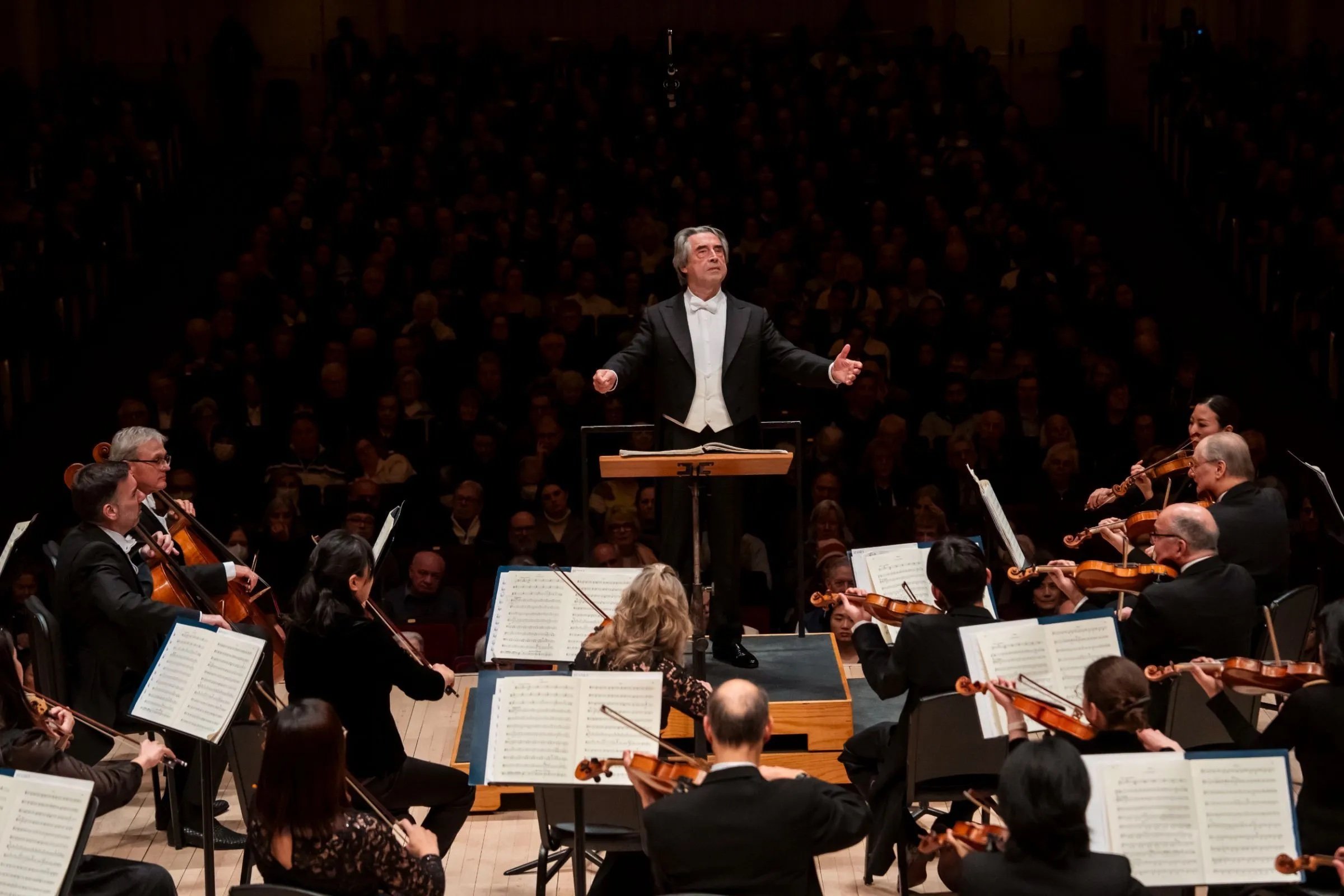REVIEW: Muti and Tchaikovsky, at a Turning Point
Above photo by Todd Rosenberg.
January 21, 2025
Tchaikovsky’s Symphony No. 4 in F Minor, Op. 36, represents a fateful turning point for the composer. Begun in the throes of his calamitous marriage to Antonina, and completed for the new woman in his life, Nadezhda von Meck, the wealthy widowed patron he would meet only through letters, the symphony opens with a brass fanfare portending Fate itself.
The venerated Chicago Symphony Orchestra brought the piece to Carnegie Hall at a correlative turning point. The resounding motif of Fate was given sonic and emotional depth by the storied Chicago brass section under the baton of Music Director Emeritus for Life, Riccardo Muti, in something of a farewell tour, before Music Director Designate Klaus Mäkelä assumes the reigns. It was a superb evening, celebrating the endurance of Muti’s insightful leadership, and feasting upon the Chicago Symphony’s extraordinary strengths.
Photo by Todd Rosenberg.
The concert’s first half was, blessedly, lighter than Tchaikovsky’s moody Fourth — highly contrasting manifestations of the Romantic era. Muti’s instincts as an opera conductor drove gossamer renditions of two moments from nineteenth-century Italian opera. The bel canto sentimentality of Bellini’s Norma, was compressed and given crystalline transparency in a no-nonsense, energetic reading of its Overture. Immediately, the CSO’s superb woodwind section stood out, meshing with the Stern Auditorium’s reverberations, and with each other’s overtones.
An Italian in Paris, Verdi had occasion to compose a rare ballet for his French grand opera Les vêpres siciliennes. An earlier Italian opera composer, Vivaldi, may have won the perpetuity award with his earlier take on “The Four Seasons,” but Verdi’s episodic sequence of balletic dances provided an indelibly tuneful tour of its much larger orchestra — and a delightful vehicle for the CSO to display its virtuosity and interpretive style. Again, the woodwind section rose to the fore, with especially refined solos, such as a star-turn from the principal clarinet celebrating spring. Muti compels crisp rhythmic discipline from the ensemble while giving his musicians room to play — he knows how to make the music resonate and levitate.
The same level of precision and lack of artifice informed the thrilling performance of Tchaikovsky’s Fourth Symphony. The CSO strings, so flawless a section that they might be taken for granted, made artfully long-arced phrases out of the first movement’s Animato in Movimento di Valse primary theme. The second theme’s spectral orchestration was revelatory, as Muti balanced the various planes of expression and gradually intensifying pulse; the arrival of a passionate call in the horns — thrillingly played — demanded a return to the Fate fanfare that opens the gates to a journeying development section.
Tchaikovsky and his bride Nina on their honeymoon.
A wonderful oboe solo, accompanied by burbling clarinet, growling horn, and wryly commenting strings made for a magical air to the second theme’s return. The CSO brass made a plump, radiant sound, and always seemed to have power to spare in their back pocket. Muti avoids adding excess schmaltz to the score, allowing Tchaikovsky’s architectural intention to come through.
The song-like second movement featured an oboe solo that haunted in its unaffectedness, and as rich melodies poured forth, the seeds of Rachmaninoff’s music were audibly being planted. Muti drew from the orchestra a maximum range of dynamics, inviting the audience to lean in to hear extended gradations of pianissimo, such as the pizzicato Scherzo — effervescent, thanks to the string section’s impressive exactness of ensemble — and jolting the room from its reverie with arrayed varieties of sforzando in the rousing Allegro con fuoco that eventually circled back to the towering herald of Fate.
The maestro introduced his choice of encore, a Notturno by Giuseppe Martucci, with a lengthy setup — both educational and inspirational, the composer having connection to Toscanini and his resistance to Fascism — emphasizing how the music of yesteryear remains relevant today.
***






